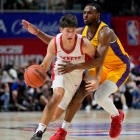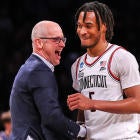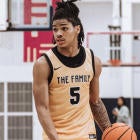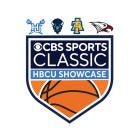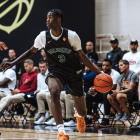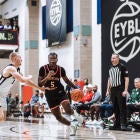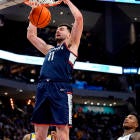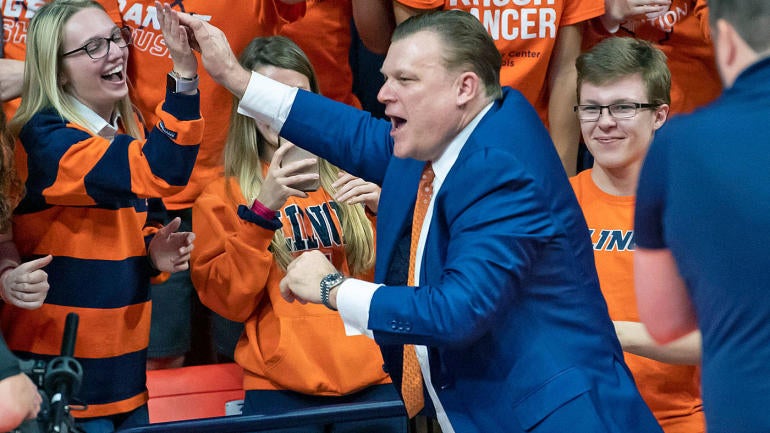
We're happy to once again bring you a unique-but-fair piece of content that we publish each April. Every hiring cycle there is an impulse to "grade" new hirings. This practice is doomed to fail, as hot-take culture has led many a talking head and/or writer to looking foolish in attempt to be bullish.
The very concept of grading requires submission of work. These coaches are judged too widely before ever blowing a whistle in practice at their new school, let alone coaching in a game. The most practical way to truly grade a coaching hire is to give it time.
And we do. Four years' worth. Time is the greatest truth-teller, after all.
Why four years? It amounts to one full recruiting cycle, and that seems best, even in this age of hyper-transferring and general roster instability. Four years gives us 100-plus games worth of evidence ... if a coach can last that long. We're up to the Class of 2017. (You can read the four-years-post evaluations hires from 2013, 2014 and 2015 and 2016 here.)
Gonzaga has its best recruiting class in history. Listen to all about it here and subscribe to Eye on College Basketball
What led to change in 2017? The biggest headline came in June of that year, when Thad Matta shockingly stepped down at Ohio State. Prior to that, Brad Underwood bailed on Oklahoma State for Illinois, which fired John Groce. Tom Crean was fired at Indiana and John Thompson III and Georgetown split. Steve Fisher retired after building San Diego State into something it had never been before. There were 16 jobs from Major Seven conferences and/or other notable programs that switched four years ago. Let's break out the red pen and get to grading.
These assessments take into account everything that is attached to a coach's term: overall record, league record, NCAA Tournament appearances (and success or lack thereof), recruiting accomplishments and off-court issues (where applicable).
Grading the 16 most notable hires from 2017
| | |
| The hire: Chris Holtmann The closest candidate to A-level, Holtmann has to get dinged due to losing to No. 15 seed Oral Roberts in this year's NCAA Tournament. The Buckeyes are 87-43 (.669) in four seasons under Holtmann, who has a quality 46-32 record in the Big Ten (highest finish: second, in his first season). He's had an NCAA Tournament-level team every season since he arrived; he's the only coach on this list of which that's true, which is why he's ranked highest. Holtmann hasn't led the Buckeyes on a Sweet 16 run yet, though, and hasn't won a Big Ten title. He's the right man for the job, but there's still room to grow. GRADE: B-plus. | |
| | |
| The hire: Brad Underwood The Fighting Illini have hit their hoped-for resurgence under Underwood. The 57-year-old led Illinois to a No. 1 seed in the 2021 NCAA Tournament, which goes a long way to his grade below. Illinois is 71-56 (.559) in the past four seasons, and it's been a strong turnaround after the first two sub-.500 campaigns. The 2021 tournament marked the first appearance in the Underwood regime, but to be fair, Illinois would have also made the 2020 Big Dance. He also gets credit not just for recruiting Ayo Dosunmu, but coaching him to First Team All-America status. Illinois ended the 2020-21 season with 20 straight weeks of being ranked. It will be interesting to see how much carryover comes in '21-22. GRADE: B-plus. | |
| | |
| The hire: Brian Dutcher The only thing missing here is an NCAA Tournament win. The Aztecs would have almost certainly had that with a 2020 tournament. Dutcher is 96-31 (.756) in four seasons, and SDSU was a projected No. 2 seed in 2020. Dutcher's done a great job keeping the program relevant nationally and near or at the top of the Mountain West since inheriting the job from Steve Fisher. The school must be all too happy that Minnesota didn't push harder to lure Dutch away from southern California. GRADE: B-plus. | |
| | |
| The hire: Mike Rhoades VCU was left in something of a lurch when Will Wade bounced for LSU. Athletic director Ed McLaughlin made a smart choice in bringing on Rhoades, who was a previous assistant at VCU but also familiar with the area due to his 13 years coaching at Randolph-Macon (and being an assistant on the 2011 Final Four Rams team). VCU has won 65% of its games the last four seasons (80-43) and made two NCAA Tournaments. VCU was robbed the chance of playing in the 2021 tournament due to multiple COVID-19 infections that prompted Indianapolis health officials to remove the team from competition before playing Oregon. If Rhoades is in for the long haul, VCU is in good hands. GRADE: B-plus. | |
| | |
| The hire: Anthony Grant Another pandemic victim: Dayton has not made an NCAA Tournament under Grant. If there was one in 2020, the Flyers would have probably been a No. 1 seed. We are crediting him as much as possible for that special 2019-20 season. UD also had Naismith (and CBS Sports) National Player of the Year Obi Toppin, who went on to be a top-10 NBA pick. Grant is 78-41 (.655) the past four seasons at his alma mater. The Flyers were just 14-10 this past season, though that was enough to make the NIT (with a prompt exit). Taking this job following Archie Miller was a tough entry point. Grant's been very good. GRADE: B-plus. | |
| | |
| The hire: Mike Boynton When Underwood left Oklahoma State after a year in 2017 to take the Illinois job, Boynton was viewed as a long shot to be the in-house promotional hire. Athletic director Mike Holder made a good choice. The Cowboys are 72-58 (.554) the last four seasons, with 2020-21 being the high-water mark to this point. Oklahoma State finished 21-9, earned a No. 4 seed, made the Big 12 title game and was ranked for ffour weeks. Boynton also recruited Cade Cunningham, a program-changing player who might become the first Cowboy alumnus to go No. 1 in the NBA Draft. Boynton was rewarded in April for his efforts with a seven-year contract valued at $3 million annually. Now we await to see what the post-Cunningham phase will bring. GRADE: B. | |
| | |
| The hire: Kevin Keatts It's important to remember that I'm weighing all four seasons equally here; there is no recency bias in my grading. Keatts might be listed surprisingly high for some, but his .668 winning percentage (79-47) is fourth-highest of any of the notable hires from the 2017 cycle. Problem is: NC State has just a single one-and-done NCAA Tournament showing under his watch. The Wolfpack are coming off their weakest season -- ninth-place finish in the ACC, 14-11 overall -- but still made the NIT quarterfinals. Keatts is 39-34 in the ACC; his career mark in that conference will likely remain above .500 a year from now. GRADE: B. | |
| | |
| The hire: Will Wade The toughest paper to grade here. LSU is 82-39 (.678) the last four years under Wade. It's made the past two NCAA Tournaments, finished in the top three of the SEC three seasons running and has won a league title. But unless you're just emerging from a cave, you know that Wade has also, by his own doing, tarnished his reputation and LSU basketball's alike. Wade was caught on wiretap discussing paying players -- a wiretap that was eventually obtained by an HBO documentarian. You can't separate on-the-court results with off-the-court rule-breaking. It's affecting my grade. Wade has in some respects been disastrous for LSU, which awaits heavy punishments from the IARP. Many believe he is overdue to be fired, albeit in delayed fashion, the way Sean Miller was. GRADE: B-minus. | |
| | |
| The hire: Cuonzo Martin Mizzou is the fourth head-coaching spot of Martin's career and the first one to last more than three seasons. He's 66-56 (.545) and bookended his time to this point with two NCAA Tournament showings, both one-and-done. The Tigers' two seasons in between were sub-.500. Martin was snakebitten a bit in that first season, as Michael Porter Jr. only played three games due to injury. Had he been healthy, the trajectory of the program might have been altered a bit for the better. But the Tigers are still in solid-enough shape heading into Martin's fifth season. GRADE: B-minus. | |
| | |
| The hire: LaVall Jordan Not having an NCAA Tournament in 2020 impacts the way some of these programs and coaches are viewed, I think. Butler would have been a No. 5 or No. 6 seed had we had a 2020 Big Dance. What if it made a Sweet 16 run? Certainly possible. And then the momentum under Jordan would've been that much better. All in all, he's been good-not-great. Butler is 69-55 (.556) the past four seasons, with two NCAA Tournament-level teams. BU was bad last season, going 10-15 and finishing 10th in the Big East. If the pattern holds, the Bulldogs will bounce back for more than 20 wins in 2021-22. GRADE: B-minus. | |
| | |
| The hire: Archie Miller Sixth, ninth, 10th, 10th. Those were Indiana's finishes in the Big Ten under Miller, and it's what got him fired after four seasons. The Hoosiers went 67-58 (.536) overall. Remember, Miller was viewed as the sure-fire hire among all others four years ago. Landing Romeo Langford -- a high school legend in that state -- did not lead to a changing of the competitive landscape in the Big Ten like IU fans had hoped. There were some other recruiting losses that also compounded matters. I expected Miller to get a fifth season, but deep-pocketed boosters paying the buyout proved me wrong. He'll be a head coach again, maybe as early as 2022, but let this be a lesson that no person hired to any job should ever relentlessly be trumpeted as a "home run." There is always a chance for underperformance. GRADE: C. | |
| | |
| The hire: Mike Hopkins Before you read any further, I want you to guess aloud how many games you think Hopkins has won the past four seasons at Washington. I'll even write one more sentence to ward off spoiling it too early. You'll probably be surprised to see the Huskies' record is 68-60 (.531), which is 8-10 games more on the W side than I would've guessed. But that's what a horrible season will do for your reputation, and Washington is coming off an abysmal 2020-21. The Huskies went 5-21. And the year before, 15-17. Hopkins' first two seasons were good, though. UW went 48-22 with an NCAA Tournament showing in Year Two. He'll no doubt enter 2021-22 on the hot seat -- with an NCAA Tournament run probably necessary in order to stay on. GRADE: C. | |
| | |
| The hire: Patrick Ewing A magical Big East championship run this year has, for the short term, salvaged what's been an underwhelming go of things in Washington, D.C. Ewing's record is 62-59 (.512) with three eighth-place finishes and one third-place finish in the league ledger. Winning the 2021 Big East bracket was one of the best stories this past March ... and then Georgetown got blasted in the first round of the NCAAs by Colorado. The Hoyas have also had serious roster defection issues the last two years, including Qudus Wahab leaving for Maryland, of all places, earlier this month. Ewing needs to be better in recruiting to stabilize the program going forward. GRADE: C-minus. | |
| | |
| The hire: Brian Gregory There was some buzz in recent weeks about whether or not Gregory would be fired, but it looks like he'll get a fifth season to try and right the ship in Tampa. The Bulls are 58-66 (.468) and have not finished better than seventh in the American Athletic Conference. Gregory had a good second season -- USF went 24-14 -- but the other three years have been sub-.500. Some perspective, though: USF hasn't had back-to-back above-.500 seasons since 2001-02. It's a tough job. GRADE: D-plus. | |
| | |
| The hire: Paul Weir New Mexico is a school that holds its coaches to a high standard. Weir was fired in March after four seasons and a 58-63 record. He went 28-43 in the Mountain West. New Mexico State fans felt scorned when Weir, who was a longtime NMSU assistant before spending one year as the head man, fled for the hated rival in 2017. They've no doubt felt some satisfaction in seeing Weir fail, but the good news for Weir is he's 41 and has many, many miles ahead in this business -- including another eventual stop some day as a head coach. GRADE: D-plus. | |
| | |
| The hire: Wyking Jones Unfortunately this was a flameout. Jones lasted two seasons and was fired with a 16-47 record. Cal's athletic department, and its ongoing financial issues, didn't help matters. Jones was promoted from within after Cuonzo Martin left for Missouri, and the cupboard was bare. Jones is back in the Pac-12; he just joined Mike Hopkins' staff at Washington. He was replaced by Mark Fox, who is 22-37 after two seasons in Berkeley. GRADE: D-minus. | |


























